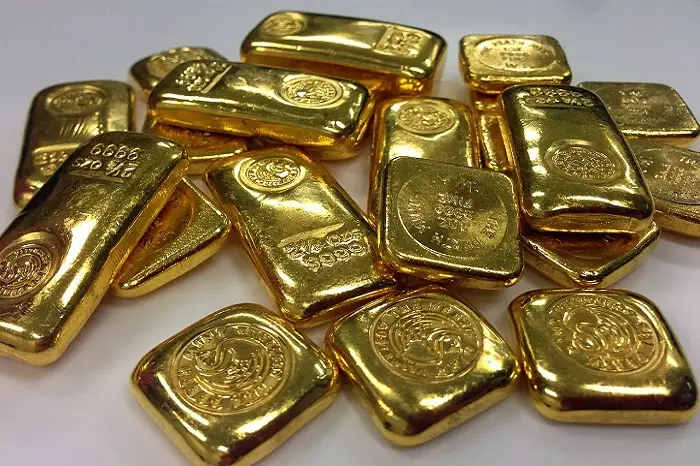Gold has long been regarded as a valuable asset, serving various roles from a symbol of wealth to a hedge against economic uncertainty. Understanding historical prices of gold can provide insights into market trends and economic conditions. In this article, we will explore what was the price of gold in 1996, examine the factors influencing its value during that time, and discuss the implications for investors and collectors today.
Historical Context: Gold Prices Leading Up to 1996
The 1980s and Early 1990s
To appreciate the price of gold in 1996, it’s essential to consider the economic landscape of the preceding decades:
1980s Boom and Bust: The late 1970s and early 1980s saw gold prices soar due to inflation and geopolitical tensions, peaking at over $800 per ounce in January 1980. However, as inflation subsided and economic conditions stabilized, prices fell dramatically.
1990s Stabilization: Throughout the early 1990s, gold prices fluctuated but generally remained low compared to previous decades. The post-Cold War era and a booming economy contributed to decreased demand for gold as a safe haven.
Market Conditions in 1996
By 1996, several economic factors influenced gold prices:
Global Economic Growth: The global economy was expanding, particularly in the United States, where a robust tech sector was emerging.
Monetary Policy: Central banks maintained relatively stable monetary policies, contributing to lower inflation rates and diminishing the immediate need for gold as a hedge.
The Price of Gold in 1996
Average Price Throughout the Year
In 1996, the average price of gold was approximately $387 per ounce. Here’s a monthly breakdown to provide further context:
January: $385.70
February: $384.80
March: $390.30
April: $389.70
May: $394.30
June: $393.10
July: $393.40
August: $385.20
September: $385.00
October: $380.30
November: $373.30
December: $376.50
Year-End Trends
At the end of 1996, gold closed at about $371 per ounce, reflecting a general downward trend from earlier in the year. This decline was largely influenced by:
Stronger U.S. Dollar: As the dollar strengthened against other currencies, gold prices typically fell.
Low Inflation Rates: With inflation rates remaining low, the demand for gold as an inflation hedge diminished.
Factors Influencing Gold Prices in 1996
Economic Indicators
Several key economic indicators affected gold prices throughout 1996:
Inflation Rates: The inflation rate in the U.S. was low, averaging around 3.3% for the year, which reduced gold’s appeal as a hedge.
Interest Rates: The Federal Reserve kept interest rates steady, contributing to a stable economic environment that lowered gold demand.
Geopolitical Factors
Global Stability: The 1990s were marked by relative geopolitical stability following the end of the Cold War, which lessened the urgency for investors to turn to gold.
Asian Economic Crisis: Though the significant Asian financial crisis began in 1997, preliminary signs of economic instability in Asia began to emerge in 1996, affecting market sentiments.
The Role of Central Banks
Gold Reserves and Policies
Central banks play a crucial role in the gold market:
Selling Reserves: In the 1990s, many central banks, particularly in Europe, began to sell off portions of their gold reserves, contributing to downward pressure on prices.
Gold as an Asset: Central banks’ strategies towards gold shifted, with some diversifying their holdings away from gold, impacting demand.
Market Impact
The actions of central banks had a ripple effect on gold prices:
Supply and Demand Dynamics: Increased supply from central bank sales combined with stagnant demand led to lower prices.
Investor Sentiment: The perception of gold as a secure asset diminished in the face of economic growth and stability.
Comparisons with Other Years
Price Fluctuations Over the Decade
To provide further context, let’s compare gold prices in 1996 to other years in the 1990s:
1990: Approximately $400 per ounce
1995: Approximately $384 per ounce
1997: Approximately $331 per ounce
This comparison highlights the overall downward trend in gold prices throughout the decade.
Gold Prices in the 2000s and Beyond
Post-2000 Surge: After a decade of decline, gold prices began to rise significantly in the early 2000s, reaching historic highs in the late 2000s and 2010s, driven by economic instability and heightened demand.
Implications for Investors
Understanding Historical Context
For modern investors, understanding gold prices in 1996 offers valuable lessons:
Market Conditions: Gold prices are influenced by a myriad of economic and geopolitical factors. Investors must consider these when evaluating gold as an asset.
Long-Term Perspective: While gold may experience short-term fluctuations, its historical significance as a store of value tends to endure over time.
Strategies for Investing in Gold
Diversification: As with any investment, diversifying your portfolio can mitigate risks associated with price fluctuations.
Stay Informed: Regularly monitor economic indicators and geopolitical events to anticipate potential impacts on gold prices.
Consider Timing: Timing your investments based on market conditions can be crucial. For example, buying during price dips may offer opportunities for greater returns.
Conclusion
In summary, the price of gold in 1996 averaged around $387 per ounce, reflecting a stable economic environment with low inflation and a strong U.S. dollar. Understanding this historical price point allows investors to appreciate the factors that influence gold’s value, providing insights that are relevant even today.
As gold continues to play a vital role in investment portfolios and as a symbol of wealth, reflecting on past prices can help inform future decisions. Whether you are a seasoned investor or a newcomer to the world of gold, grasping the nuances of historical pricing will enhance your understanding and strategy in navigating this precious market.
Related topics:
- What Was the Price of Gold in 1995? A Comprehensive Look
- The Price of Gold in 1994: Insights and Analysis
- The Price of Gold in 1993: A Comprehensive Analysis


